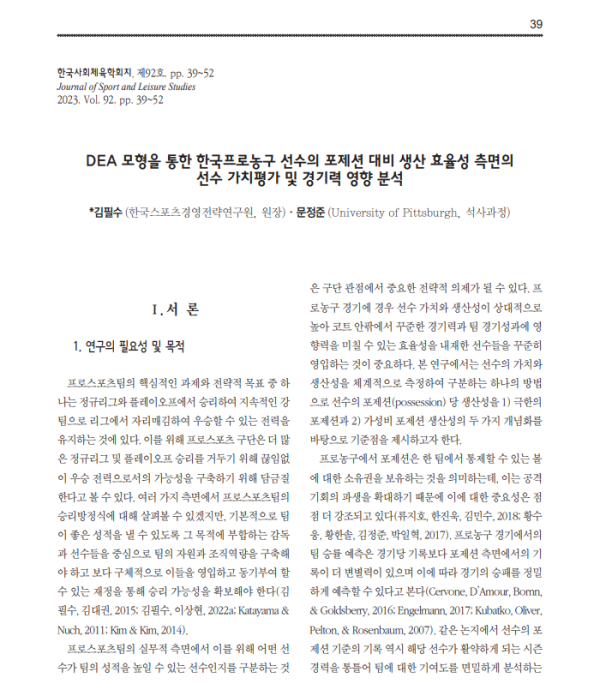Purpose: The purpose of this research is to conduct a DEA (Data Envelopment Analysis) assessment to evaluate the efficiency of Korean Basketball League (KBL) players and to distinguish efficient player types based on the concept of possession input.
Method: We theoretically extended the traditional concept of ball possession in the sport management literature by evaluating player efficiency based on ball possession. We suggested an accurate measurement of possession-based efficiency of Korean professional basketball players, typically utilized by the DEA methodology.
Results: The empirical results of this study represented that on-court performance and efficiency of players vary based on the level of ball possessions, configuring a precise evaluation to measure a professional basketball player’s efficiency. Based on our findings, we descriptively identified our understanding of the fundamental segmentation of players with a spectrum of ‘extreme-level of ball possession efficiency (ball hog)’ and ‘effective-level ball possession efficiency (blue-collar worker)’. To rigorously estimate, empirically measure, and evaluate players’ efficiency, we conducted regression analysis. The results indicated that possession-based player efficiency was associated with their floor impact counter (FIC) performance.
Conclusion: In summary, the findings of this study imply that possession-based player efficiency is one of the most significant player evaluation features affecting on-court performance.
Key Words:Player efficiency, Possession, Player Performance, Player value evaluation, Data envelopment analysis
링크 : https://www.dbpia.co.kr/journal/articleDetail?nodeId=NODE11409122











 로그인한 회원만 댓글 등록이 가능합니다.
로그인한 회원만 댓글 등록이 가능합니다.